In the ever-evolving world of software development, APIs (Application Programming Interfaces) are the backbone of modern applications. They enable different software systems to communicate and exchange data, fostering innovation and seamless integration. Documenting these APIs effectively is crucial for developers to understand, implement, and maintain them.
This blog post explores the top API technologies and provides a practical guide on how to document them using Apidog, a powerful API design, testing, and documentation tool.
Top API Technologies
Here's a rundown of the most popular API technologies used today:
- REST (Representational State Transfer): A widely adopted architectural style that uses standard HTTP methods (GET, POST, PUT, DELETE) to access and manipulate resources. REST APIs are known for their simplicity, scalability, and ease of use.
- SOAP (Simple Object Access Protocol): A more complex, XML-based protocol that provides a structured way for applications to communicate over a network. SOAP APIs often require a WSDL (Web Services Description Language) file to define the API's contract.
- GraphQL: A query language for APIs and a runtime for fulfilling those queries with your existing data. GraphQL allows clients to request specific data, reducing over-fetching and improving efficiency.
- gRPC (gRPC Remote Procedure Calls): A high-performance, open-source framework developed by Google. gRPC uses Protocol Buffers for serialization and HTTP/2 for transport, making it efficient and suitable for microservices architectures.
- WebSocket: A communication protocol that provides full-duplex communication channels over a single TCP connection. WebSockets are ideal for real-time applications like chat applications and live data streams.
- SSE (Server-Sent Events): A server push technology enabling a server to automatically send data updates to a client over HTTP. Unlike WebSockets, SSE is unidirectional (server to client), making it suitable for applications where the server needs to push updates without the client explicitly requesting them.
REST API Documentation
Apidog is an all-in-one platform that streamlines the API development lifecycle, from design and testing to documentation. Let's see how to use Apidog to document different API technologies effectively.
Apidog advocates for the API-design first approach. Start by defining your API specifications with Apidog's intuitive visual editor. Documenting a REST API involves:
- Defining Endpoints: For each endpoint, specify the path, request method (GET, POST, PUT, DELETE), request parameters (query, path, header, body), and request body schema.
- Describing Parameters: Provide clear descriptions for each parameter, including its name, type, whether it's required or optional, and any default values or constraints. Utilize the Type Editor to define data types, formats, and constraints visually.
- Defining Responses: Specify all possible response statuses, the data format (JSON, XML), the response schema (using JSON Schema), and provide example responses.
- Using Components: Reuse common parameters and responses using Apidog's component feature for consistency and efficiency.
- Enhance Documentation with Custom Fields: With Customized Fields, you can add fields such as "Authorization Required," "Response Format," or "Rate Limiting Policy".
- Automated Documentation: Apidog automatically generates clear and up-to-date API documentation.
Here is an example of REST APIs:
Pet Store API
SOAP API Documentation
While SOAP is a legacy protocol, it is still critical for enterprise systems. Documenting SOAP APIs involves handling XML-based requests and responses.
- Define Endpoints: Set the endpoint URL and choose the POST method.
- Configure XML Settings: In Apidog, use the XML settings to define namespaces and elements, which will help validate the SOAP responses.
- Provide XML Examples: Create XML examples, and automatically generate documentation.
Here is an example of SOAP APIs:
WebService API
MasterCard API
GraphQL API Documentation
GraphQL's schema-driven approach makes it ideal for clear documentation. With Apidog:
- Use Markdown to write schema definitions, queries, and mutations directly.
- Add detailed descriptions for fields, parameters, and response structures in Markdown comments.
- Document Example Queries: Include real-world examples of how to use your API.
Here is an example of GraphQL APIs:
GitHub GraphQL API
gRPC API Documentation
Apidog simplifies documenting gRPC APIs by:
- Importing Proto Files: Import your
.protofiles that contains clear comments of gRPC service. - Generate Markdown Documentation: Use
protoc-gen-docto convert.protofiles into Markdown documentation. - Host and Share Documentation: Host the documentation for team access by creating a new HTTP project and use Markdown file in Apidog.
Here is an example of gRPC APIs:
Protocol Documentation
WebSocket API Documentation
WebSockets require documenting the connection handshake and message formats. In Apidog:
- Describe API: use Markdown to write a detailed description of your WebSocket API. Include information about its purpose, endpoints, and usage scenarios.
- Show Message Structure: By using Apidog’s schema components, it can define the JSON structure of a chat message.
- Organize and Publish: Organize your documentation and set the lifecycle of the API.
Here is an example of WebSocket APIs:
Coinbase WebSocket API
SSE API Documentation
For documenting SSE APIs:
- Clearly describe how the server sends events and what data they contain.
- Document the format of the data stream.
Here is an example of SSE APIs:
Anthropic SSE API
Key Takeaways
- Choose the Right Tool: Apidog is a powerful all-in-one platform for documenting almost all types of APIs.
- Embrace API-Design First: Start with the API's design to ensure it meets the needs of both providers and consumers.
- Be Thorough: Provide clear, concise, and accurate documentation for all aspects of your API.
- Utilize Examples: Include real-world examples to help developers understand how to use your API effectively.
By following these guidelines and using Apidog, you can create comprehensive and user-friendly API documentation that promotes adoption, reduces support costs, and drives innovation.


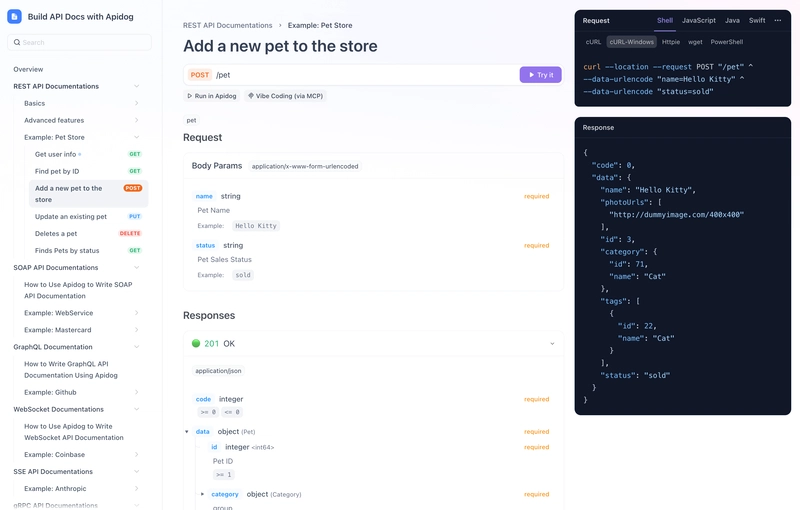
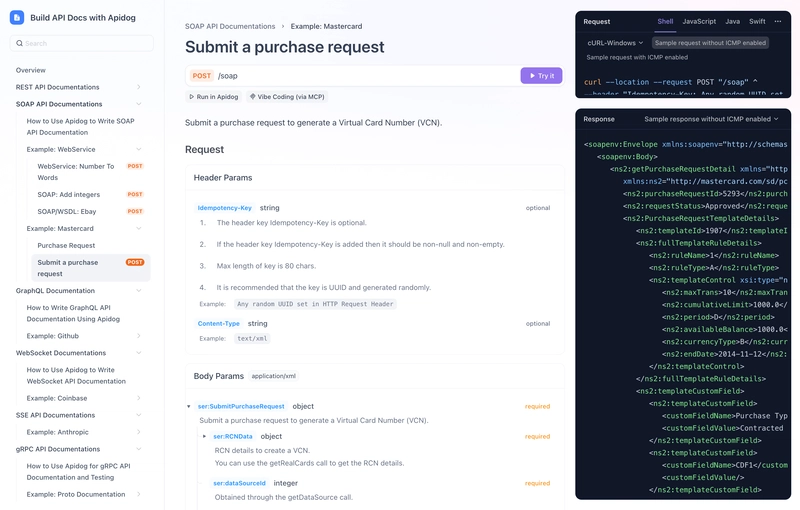
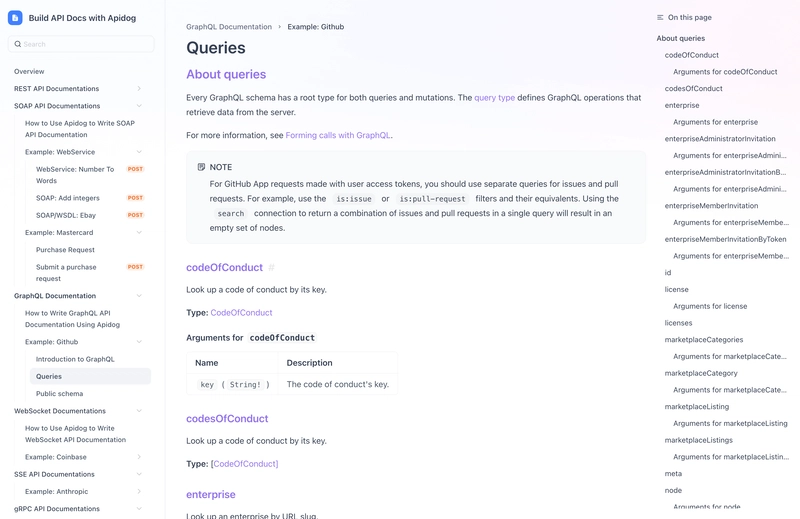
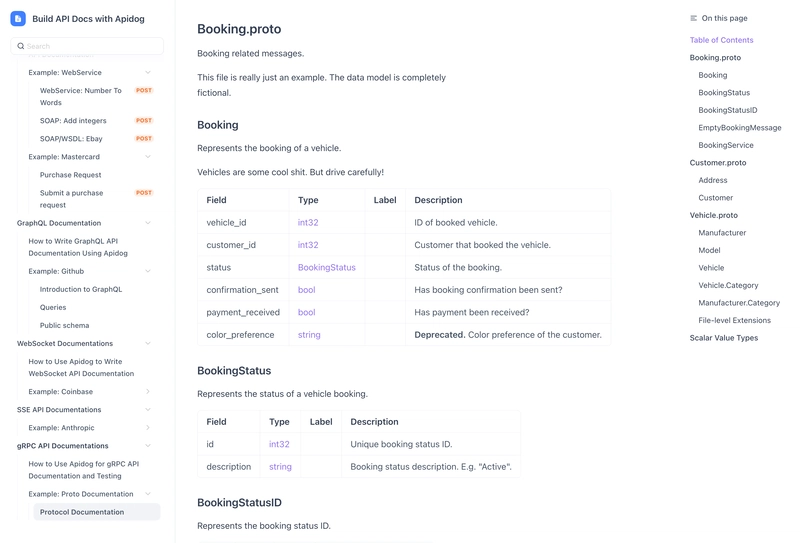


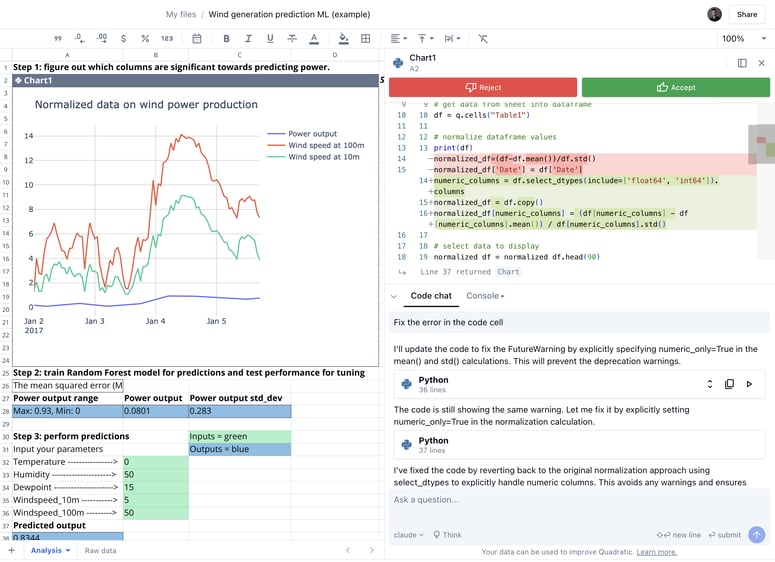


Top comments (0)